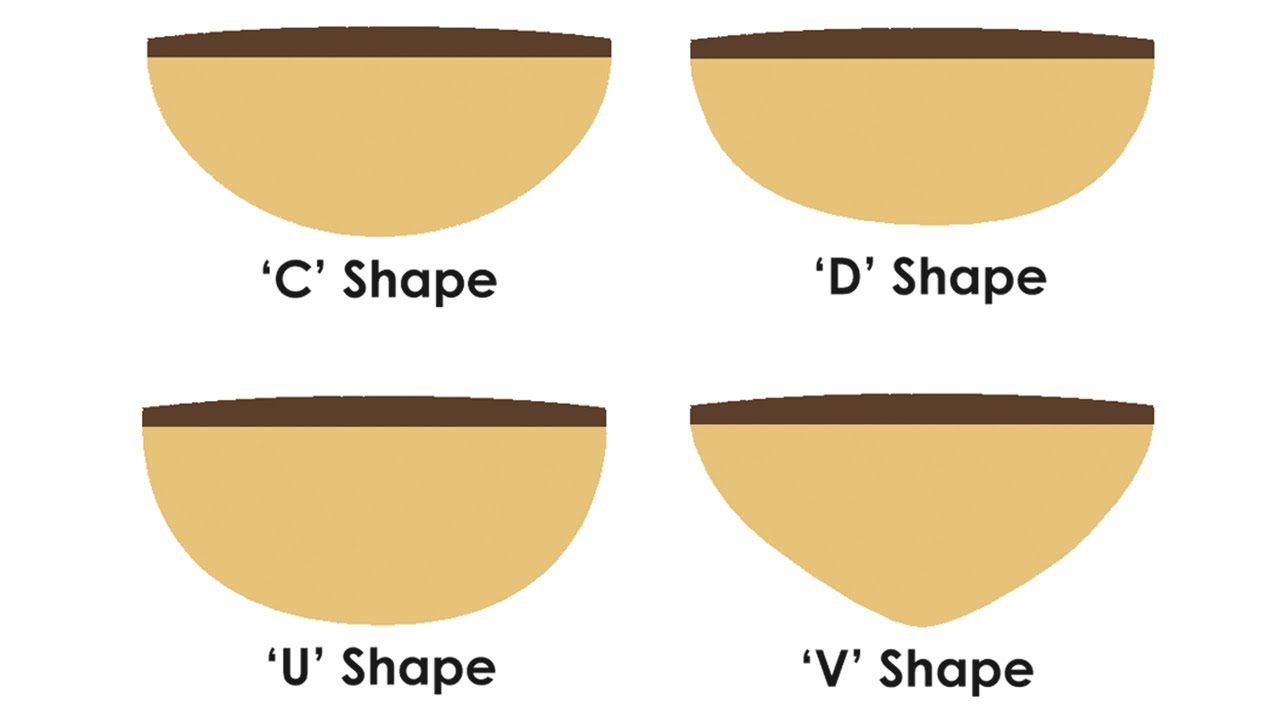One of the most important aspects of a guitar’s playability is the neck shape. When selecting a guitar, it is essential to consider the fretboard radius and width. These factors determine how the neck feels in your hands and how easy it is to play different chords and notes. Today, we will explore the differences between fretboard radius and width and provide examples of popular guitar models with different neck shapes.
Fretboard Radius:
The fretboard radius refers to the curvature of the fretboard. A smaller radius means that the fretboard is more curved, while a larger radius means that it is flatter. The most common fretboard radius for guitars is 9.5 inches, which provides a comfortable balance between playability and string bending.
Examples of guitars with different fretboard radii:
- Fender Stratocaster: The Fender Stratocaster has a 9.5-inch fretboard radius, making it easy to play chords and solo notes. It is a versatile guitar that is popular among blues, rock, and country players.
- Gibson Les Paul: The Gibson Les Paul has a flatter fretboard radius of 12 inches, which makes it ideal for lead players who prefer to bend strings with ease. It has a thicker neck profile, which provides added sustain and a rich, warm tone.
- Ibanez RG: The Ibanez RG series has a flatter fretboard radius of 16 inches, making it ideal for shredders and metal players who prefer a fast-playing neck. It has a thin neck profile that allows for effortless finger movement across the fretboard.
Fretboard Width:
The fretboard width refers to the distance between the outer edges of the fretboard. A narrower width is easier to play for those with smaller hands, while a wider neck is better suited for players with larger hands.
Examples of guitars with different fretboard widths:
- Fender Telecaster: The Fender Telecaster has a narrow 1.625-inch nut width, which makes it easy to play chords and perform complex fingerpicking patterns. It is a popular guitar among country, blues, and indie rock players.
- Gibson ES-335: The Gibson ES-335 has a wider 1.6875-inch nut width, which provides added space for players with larger hands. It is a versatile guitar that is popular among jazz, blues, and rock players.
- PRS Custom 24: The PRS Custom 24 has a wide-thin neck profile that provides added comfort for players with larger hands. It has a 1.6875-inch nut width, making it easy to play complex chord shapes and solos.
Pros and Cons of Different Neck Shapes:
- Narrow necks: Pros – easy to play chords and perform complex fingerpicking patterns. Cons – can be uncomfortable for players with larger hands.
- Wide necks: Pros – provides added space for players with larger hands. Cons – can be uncomfortable for players with smaller hands and can be challenging to play complex chord shapes.
- Flatter fretboard radius: Pros – ideal for lead players who prefer to bend strings with ease. Cons – can make it challenging to play complex chords.
- More curved fretboard radius: Pros – provides added comfort for players who prefer a comfortable, easy-to-play neck. Cons – can be challenging for lead players who prefer to bend strings with ease.
When selecting a guitar, it is essential to consider the fretboard radius and width. Each type of neck shape has its own unique pros and cons, and it ultimately comes down to personal preference and playing style. Whether you prefer a narrow or wide neck, a flatter or more curved fretboard radius, there is a guitar out there that will suit your needs.

